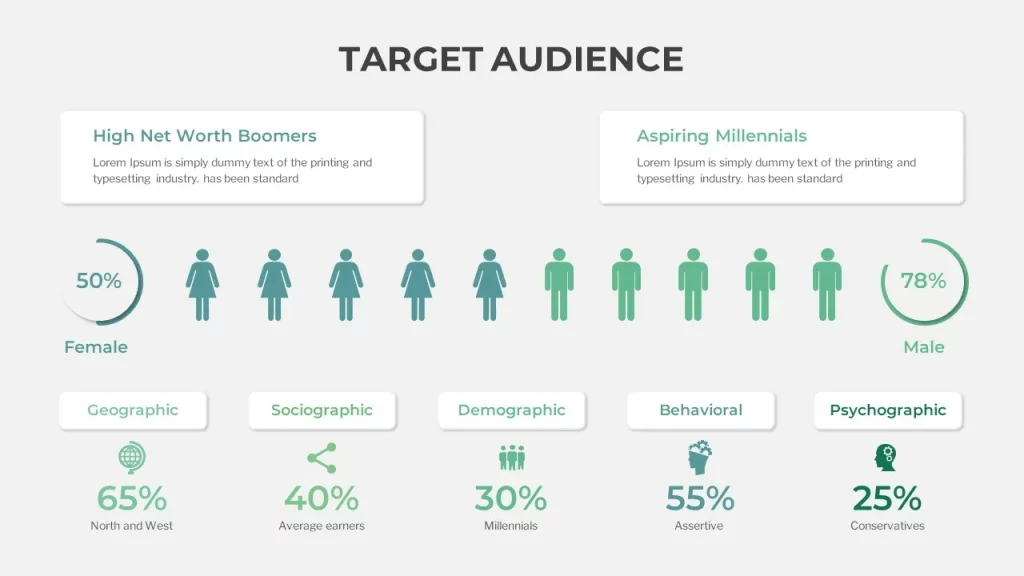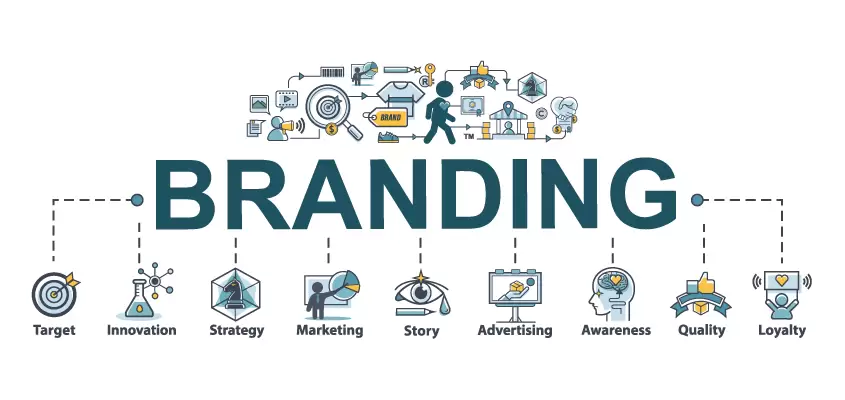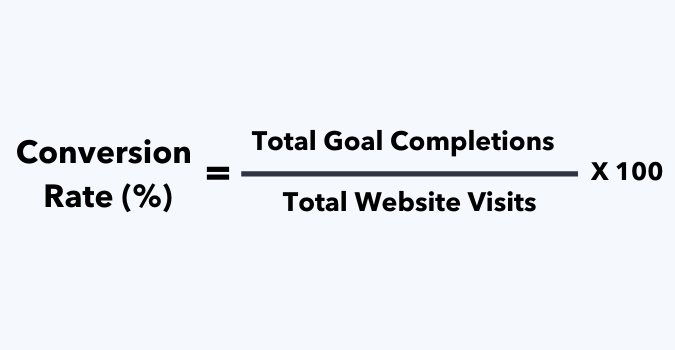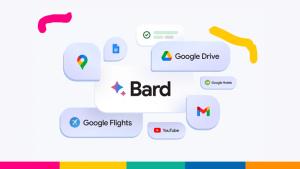Call Us: (256)762 179048

When it comes to content marketing, there’s an essential trio that forms the backbone of your strategy: Audience, Branding, and Conversion. These three elements, often referred to as the ABCs of content marketing, are the keys to unlocking success in the Content Marketing world.
It is the mix play of these three: audience, Branding and Conversion, that has helped successful brands to nail it in year after year.
When you determine the required resources to identify your target audience, you need to go on and build a Brand around it, you’ll be doing great, what is missing is actually turning this audience into a profit.
Let’s be honest, you and I know that the more the information, a customer can find about your Brand, the more they are most likely to consider your Brand out of the many others.
Let’s start with A
A is for Audience

To be specific, in this article we shall focus on the Target audience.
A target audience, also known as a target market, is a specific group of people or businesses that a company aims to reach with its products, services, or marketing efforts.
This group shares common characteristics, interests, behaviors, or demographics that make them more likely to engage with and benefit from what your business offers.
Identifying and defining your target audience is like creating a roadmap for your business. It helps you focus your resources, tailor your messaging, and refine your strategies to effectively connect with the right people.

Understanding your target audience helps you allocate your resources (time, money, and effort) more efficiently. Instead of casting a wide net and hoping for the best, you can concentrate your efforts on the individuals or groups most likely to convert into customers.
Conduct thorough market research to gather data on demographics, psychographics, and behavioral patterns of potential customers. Surveys, interviews, and online analytics tools can be invaluable for this.
Depending on your industry, you can easily determine your audience, though most times, some audiences cross industries.
It’s good to consider the following,
Know your Audience: Start by creating detailed buyer personas. These are semi-fictional representations of your ideal customers based on market research and real data. Personas help you grasp your audience’s demographics, interests, pain points, and goals.
Tailor your content: Once you know your audience inside and out, you can create content that speaks directly to them. This tailored approach ensures your content resonates, engages, and builds trust with your target audience.
Map the customer journey: Understanding your audience also means comprehending their journey from awareness to conversion. Develop content for each stage of the customer journey, guiding your audience seamlessly through the sales funnel.
B is for Branding

Your brand identity is what sets you apart from the competition. It’s the heart and soul of your business. In crowded markets, branding helps you carve a unique niche and stand out in a sea of competitors.
If you want to buy sneakers, I give you two options: either buy sneakers from Nike or buy them from a local store with a local brand name on them. What would you prefer? I assume, Nike! You would choose Nike because it is a brand; it has a unique selling point, and this is why it is the number one sneaker brand worldwide.
If a business has established a brand, half of the work is already done. Effective branding can elevate a business above competitors, instilling trust and credibility in the minds of consumers, and ultimately driving long-term success and growth.
At its core, branding is about creating a distinct and memorable identity for a product, service, or company. It’s the art and science of crafting an image that sets you apart from the competition and sticks in the minds of consumers.
Effective branding is more than just a logo or a catchy slogan; it’s the sum of every interaction and experience people have with your brand.
Logo and Visual Identity: Your logo is the face of your brand, instantly recognizable and often the first point of contact with your audience. Consistency in visual elements, such as colors, fonts, and design, reinforces brand recognition.
Brand Story: Every brand has a story to tell. Your history, values, and mission shape your brand’s narrative, helping consumers connect with your purpose on a deeper level.

Consistency: Consistency in branding creates trust. When consumers encounter your brand across various touchpoints – from your website to social media to product packaging – they should experience a coherent and familiar identity. Last but not least, consistency is the key. No matter how much time you spend investing in your business, if you are not consistent in doing what you are doing, you will never be able to build your brand.
The best brands are successful because they are consistent. Consistency in terms of, their employees, their customer experience, and in terms of bounce back rate. Stay consistent and success will kiss your feet😊
Visual Identity: Visual elements such as logos, color schemes, and graphics play a significant role in branding. Ensure that your visuals are not only eye-catching but also consistent with your brand’s aesthetics.
Story Telling: Effective branding often revolves around storytelling. Share your brand’s story, values, and mission through your content. Stories have the power to connect emotionally with your audience and leave a lasting impression.
C is for Conversion

Ultimately, your content marketing efforts should lead to conversions—whether it’s signing up for a newsletter, making a purchase, or requesting a consultation. Here’s how to excel in the “C” of the ABCs of content marketing:
A conversion occurs when a website visitor takes a desired action. This action can vary widely depending on your goals. For e-commerce, it might be making a purchase. For a blog, it could mean signing up for a newsletter.
In a B2B context, it might involve requesting a demo or filling out a contact form. Essentially, a conversion is the moment when a passive visitor becomes an active participant in your online ecosystem.
The following are some of the way you can convert visitors into customers
Call to Action(CTA): Include clear and compelling CTAs in your content. Whether it’s “Subscribe Now,” “Get Started,” or “Buy Now,” CTAs guide your audience toward the desired action.

Landing Pages: Create dedicated landing pages that match the content your audience engaged with. These pages should focus on converting visitors into leads or customers.
A/B Testing: Regularly test different elements of your content, such as headlines, CTAs, and layouts, to optimize for conversion rates. Data-driven decisions can significantly impact your success.
Live chat is an excellent tool for turning visitors into customers, primarily because it allows you to intervene before an undecided customer abandons their purchase.
Live Chats: Companies love it because it’s so cost-effective. A key feature of most live chat software is page tracking, which enables you to create “triggers” that will initiate the conversation with a customer when their activity signals they’re having a problem with the site or their purchase.
It’s good to also determine the Web Conversion Rate using this formular

Examples of Live Chat plugins or services incude;
- Live chat
- Tidio
- Hubspot Live agent
- Sendinblue chat
- Zendesk chat etc
Tools Important in Audience, Branding and Conversion
Audience
- Google Analytics: This powerful tool helps you track website traffic, user behavior, and demographic information, giving you valuable insights into your audience’s preferences.
- Social Media Insights: Platforms like Facebook Insights, Twitter Analytics, and LinkedIn Analytics provide data on your audience’s engagement and demographics on social media.
- Keyword Research Tools: Tools like SEMrush, Ahrefs, and Google Keyword Planner help you understand the search terms your audience uses, allowing you to create content that aligns with their interests.
- Customer Relationship Management (CRM) Software: CRM systems like HubSpot or Salesforce help manage and segment your audience for targeted content and personalized communication.
Branding
- Design Software: Adobe Creative Suite (including Photoshop, Illustrator, and InDesign) and Canva are essential for creating visually appealing branding elements, such as logos, graphics, and marketing collateral.
- Brand Guidelines: Tools like Frontify and Brandfolder help you create and maintain brand guidelines, ensuring consistent visual branding across all channels.
- Social Media Management Tools: Platforms like Hootsuite, Buffer, and Sprout Social allow you to schedule posts, manage social media accounts, and maintain a consistent brand voice.
- Content Management Systems (CMS): CMSs like WordPress, Drupal, or Joomla are fundamental for managing and presenting your brand’s content online.
Conversion
- Email Marketing Platforms: Tools like Mailchimp, Constant Contact, and HubSpot Email Marketing enable you to create and send targeted email campaigns to convert leads into customers.
- A/B Testing Tools: Tools like Optimizely and Google Optimize help you test variations of web pages, emails, or ads to optimize conversion rates.
- Heatmaps and User Behavior Tools: Services like Hotjar and Crazy Egg provide heatmaps, session recordings, and user behavior insights to understand how visitors interact with your site and identify areas for improvement.
- CRM Systems: CRM tools like Salesforce, HubSpot CRM, or Zoho CRM assist in managing leads and nurturing them through the sales funnel.
- Marketing Automation Platforms: Tools like enable you to automate marketing workflows and lead nurturing to drive conversions.
- Conversion Rate Optimization (CRO) Software: Solutions like VWO (Visual Website Optimizer) and Unbounce specialize in optimizing landing pages and conversion paths.
Conclusion
For every Business, its vital to fully understand the ABC in Content Marketing and their importance in developing and establishing your services or products. It’s a blend of creativity in Identifying and Targeting your audience, Creating really good and high Quality Branded Content and ensuring that your visitors to whichever point of your business convert into potential or real customers.
I hope this makes you uncomfortable to start today to establish and implement this ABC method of Content Marketing in your Busines.
I hope this article was helpful
If so, please give it a like and check out for more articles to help you grow your business
Let’s catchup in the next one.





